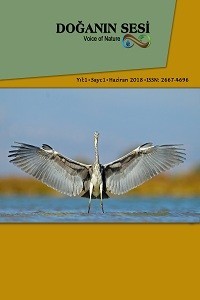VETERİNER HEKİMLİKTE PROBİYOTİK KULLANIMI
Probiyotikler verildikleri canlıların bağırsaklarında patojen mikroorganizmalara karşı antagonistik etki gösteren, bağırsak mikroflorası üzerine yararlı etkiler oluşturan, patojen olmayan, canlı doğal bağırsak mikroorganizmaları olarak tanımlanmaktadırlar. Probiyotikler hakkındaki ilk çalışma 19. yüzyılın sonlarında Elie Metchnikoff tarafından yapılmış ve fermente sütlerde belirlediği laktik asit bakterilerini probiyotik olarak bildirilmiştir. Probiyotik olarak kullanılan en yaygın laktik asit bakterileri Lactobacillus, Streptococcus, Enterococcus, Leuconostoc, Pediococcus ve Bifidobacterium’dur. Probiyotik bakteriler hayvanlar için patojenik olmamalı, toksin üretmemeli, aktarılabilir antibiyotik direnç genleri içermemeli, düşük pH ve safra tuzlarından etkilenmeden bağırsak hücrelerine tutunabilmeli, kolonize ve metabolize olabilmeli, üretim ve depolama sırasında canlılığını ve aktivitesini koruyabilmelidir. Probiyotiklerin rasyona katılmaları sonucunda hayvanlarda canlı ağırlık ve yemden yararlanmanın arttığı, gastrointestinal hastalıkların azaldığı bildirilmektedir. Günümüzde ticari probiyotik ürünler hakkındaki mevcut bilgiler bu ürünlerin güvenilir olduklarını göstermektedir. Bununla birlikte, potansiyel probiyotik bakterilerinin seçiminde, Avrupa Birliği tarafından önerilen zorunlu güvenlik kriterlerine dikkat edilmesi gerekmektedir. Sonuç olarak; probiyotiklerin akut bir hastalığın tedavisinde antibiyotiklerin yerini alması düşünülmese de koruyucu tedavide ve hayvanlarda büyümenin teşvik edilmesinde antibiyotiklere alternatif olarak kullanımı mümkün görülmektedir. Gelecekte kullanımları daha yaygın hale gelecek, farklı koşullar altında hayvanlardan maksimum verim alınabilecektir.
Anahtar Kelimeler:
Probiyotik, Hayvan yetiştirme, Güvenilirlik
The Use of Probiotics in Veterinary Medicine
Probiotics are defined as non-pathogenic, living natural intestinal microorganisms that produce beneficial effects on intestinal microflora, which have antagonistic action against pathogens in the intestines of the administered organisms. The first study on probiotics was conducted by Elie Metchnikoff in the late 19th century and reported the lactic acid bacteria isolated in fermented milks as a probiotic. The most common lactic acid bacteria used as probiotics are Lactobacillus, Streptococcus, Enterococcus, Leuconostoc, Pediococcus and Bifidobacterium. Probiotic bacteria shouldn’t be pathogenic for animals, toxin-producing and transferable antibiotic resistance gene carrier should be able to hold onto the intestinal cells, colonize and metabolize unaffected from low pH and bile salts and able to survive during production and storage. The increase in live weight, improvement of utilization of feed and decrease of gastrointestinal diseases are reported after probiotic administration in animals. The current knowledge about commercial probiotic products shows that they are reliable. Nevertheless, the selection of potential probiotic bacteria requires the compulsory safety criteria recommended by the European Union. As a result; although probiotics are not considered to take antibiotics in the treatment of an acute illness, they can be used as an alternative to antibiotics in protective treatment and encouraged to grow in animals. Their use will become more widespread in the future and maximum efficiency will be obtained from animals under different conditions.
Keywords:
Probiotic, Animal breeding, Reliability,
___
- Douglas, L.C., & Sanders, M.E. (2008). Probiotics and prebiotics in dietetics practice. J Am Dietetic Assoc, 108, 510-521.
- Ezema, C. (2013). Probiotics in animal production: A review. J Vet Med Anim Health, 5(11), 308-316.
- Fuller, R. (2004). Reasons for the apparent variation in the probiotic response. Biologist, 51(4), 232.
- Gibson, G.R., & Roberfroid, M., (1995). Dietary modulation of the human colonic microbiota: introducing the concept of prebiotics. J Nutr, 125, 1401-1412.
- Jahanpour, H., Seidavi, A., Qotbi, A.A.A., Van Den Hoven, R., Rocha Silva, S., Laudadio, V., & Tufarelli, V. (2015). Effects of the level and duration of feeding restriction on carcass components of broilers. Arch Anim Breed, 58, 99-105.
- Olnood, C.G., Beski, S.S.M., Choct, M., & Iji, Pa. (2015). Novel probiotics: Their effects on growth performance, gut development, microbial community and activity of broiler chickens. Animal Nutrition, 1, 184-191.
- Rastall, R.A., Gibson, G.R., & Gill, H.S., (2005). Modulation of the microbial ecology of the human colon by probiotics, prebiotics and synbiotics to enhance human health: An overview of enabling science and potential applications. FEMS Microbiol Ecol, 52, 145-152.
- Sanders, M.E. (1999). Probiotics. Food Technol, 53, 67-77.
- Saxelin, M., Tynkkynen, S., & Mattila-Sandholm, T. (2005). Probiotic and other functional microbes: from markets to mechanisms. Current Opin Biotechnol, 16, 204-211.
- Schrezenmeir, J., & De Vrese, M. (2001). Probiotics, prebiotics, and synbiotics--approaching a definition. Am J Clin Nutr, 73(2), 361-364.
- Servin, A.L., & Coconnier, M.H. (2003). Adhesion of probiotic strains to the intestinal mucosa and interaction with pathogens. Best Pract Res Clin Gastroenterol, 17(5), 741-754.
- Shokryazdan, P., Faseleh Jahromi, M., Liang, J.B., Ramasamy, K., Sieo, C.C., & Ho, Y.W. (2017). Effects of Lactobacillus salivarius mixture on performance, intestinal health and serum lipids of broiler chickens. PLoS One, 12:e0175959.
- Tayeri, V., Seidavi, A., Asadpour, L., Clive, J.C., & Phillips, A. (2018). Comparison of the effects of antibiotics, probiotics, synbiotics and prebiotics on the performance and carcass characteristics of broilers. Vet Res Commun, https://doi.org/10.1007/s11259-018-9724-2.
- Wang, H.L., Shi, M., Xu, X., Pan, L., Pan, L., Zhao, P.F., Zhao, P.F., Ma, X.K., Ma, X.K., Tian, Q.Y., Qi, Y.T., & Piao, X.S. (2016). Effects of Flavomycin, Bacillus licheniformis and Enramycin on performance, nutrient digestibility, gut morphology and the intestinal microflora of broilers. J Poult Sci, 53,128-135.
- Yayın Aralığı: Yılda 2 Sayı
- Başlangıç: 2018
- Yayıncı: Doğa ve Sürdürülebilirlik Derneği
Sayıdaki Diğer Makaleler
SALDA GÖLÜ KORUNAN ALANININ SÜRDÜRÜLEBİLİRLİĞİ
İZMİR'İN ENDEMİK TÜRÜ SALVIA SMYRNAEA, DEĞİŞMEYE DEVAM EDİYOR
VETERİNER HEKİMLİKTE PROBİYOTİK KULLANIMI
Banur BOYNUKARA, Timur GÜLHAN, Zeynep Şebnem DEVELİ
ÜLKEMİZDEKİ KINALI KEKLİK POPÜLASYONLARININ BİYOLOJİK VE EKOLOJİK DEĞERLENDİRİLMESİ
1,5 İLE 2°C ARASINDAKİ KÜRESEL ISINMANIN, İKLİM DEĞİŞİKLİĞİNDE YARATTIĞI EŞİTSİZLİK
